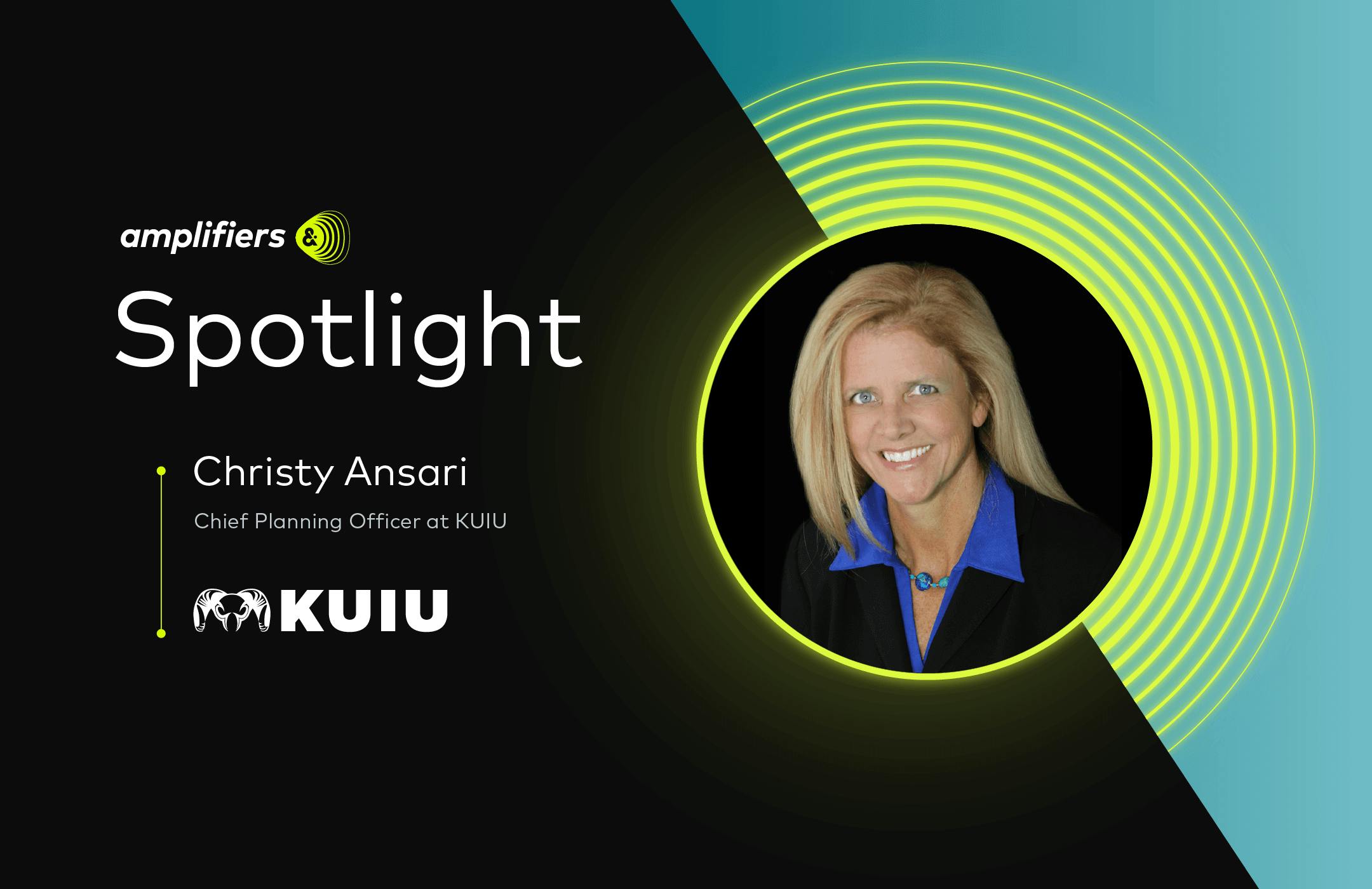Our customers are our biggest source of inspiration. We love catching up with them to learn more about how they work and play so we can share it with our community.
Christy in five:
Chief Planning Officer at outdoor lifestyle brand KUIU
Specializes in ensuring sales plans are followed and growth plans are established
Supports the marketing and merchandising teams with Amperity insights
Uses Amperity data to identify critical milestones in customer journeys and for measuring the effectiveness of email marketing campaigns
Has been working on perfecting (and eating) sourdough bread.
What are you responsible for as the Chief Planning Officer?
My single biggest purpose is making sure we’re following our sales plan and establishing reasonable but aggressive growth plans, and all of the things that go along with that.
What challenges were you facing before Amperity?
The only way for a company to grow is to acquire more customers. You can’t just keep sucking more and more money out of the ones you have, and as much as we’d like every customer to stay with us forever, that isn’t always the case.
A key metric of our sales growth is new customer acquisition, and before Amperity, we really didn’t know what our acquisition rates were. We could get at it sometimes through really painful lookup tables, and we used an outside service that could kind of give us an idea. But we couldn’t get it in real-time. We definitely couldn’t get all of the associated activities and behavior metrics with that acquisition to make smarter decisions. Another challenge was expanding access to data to understand and engage individual customers — without a single view of the customer, we couldn’t track behavior over time, which led to being unable to personalize within email campaigns or make data-driven decisions effectively.
How has Amperity helped solve this challenge?
We had a tough time identifying unique customers before Amperity, which is a problem I think just about every online business has — I mean, we had customers with maybe 50 different IDs! Once we had Amperity, we had the missing piece of the puzzle. Now we're able to identify the levers that increase acquisition, pinpoint the problems with retention, and discover who’s buying what in terms of returning vs. first-time customers.
I imagine this has influenced your workflow quite a bit. Can you share more about that?
I used to try and sort through and identify all our customers and would nearly break my computer every time. Now with Amperity it’s just so much easier. Before Amperity, we had 400,000+ customer records (maybe more than that), and now we have well over a million.
Using Amperity, we were able to identify a representative subset of customers for surveys and customer studies. By feeding Amperity data into the Google data studio, we’ve created a data warehouse that houses all of our different data sources. Now, we can identify critical milestones in customer journeys, like when and what they purchased, if they’re enrolled in our loyalty program, and whether or not they made a purchase after subscribing to our email.
What teams do you support? How does Amperity data influence their roles?
I share a lot of the information with the merchandising team, as well as marketing. Promotional decisions are strategically made with Amperity data to understand what will appeal to a first-time buyer vs. a repeat one.
With the merchandising team, I share the data so that while we work on product development, we can focus on what’s bringing people into the brand and determine what kinds of products we want to develop and grow in order to keep customers.
Can you share an example of how data is used?
Our monthly email blast includes a relatively large number of non-buyers. Some of them read our emails for two years even before making their first purchase, and using Amperity helps us ensure that our cadence of emails is appealing to that acquisition class. We also use this information to paint a much clearer picture of LTV and understand the trust cost of acquisition. Of course, none of this would be possible if we hadn’t identified our unique customers.
You mentioned email blasts — do you have any metrics to share?
I don’t have exact data to share, but I can tell you our list size has tripled and email has become the driver of our marketing. The fact that we have that many more emails than we used to and that we’ve maintained open rates with that growth has shown us there’s a lot of interest in our emails. When we measure our channel performance and sales performance, our email channel has grown more than other channels in terms of volume.
"Using Amperity, we can identify critical milestones in customer journeys, like when and what they purchased, if they’re enrolled in our loyalty program, and whether or not they made a purchase after subscribing to our email."
Amperity is just one piece of the puzzle. How does it fit into your current techstack?
We’ve taken the Amperity data and blended it with our Google Analytics data, and the transactional data in our ERP. So, for example, if we run a promotion with coupon codes, I can actually see how much email is driving through other channels. It’s been pretty consistent — every dollar that comes through the email channel is driving an additional 80 cents through other channels. I couldn’t have seen that information before using Amperity.
What is your favorite feature or capability in Amperity, and what do you use it for?
I love using the VSE to filter tables and access transactional-level data. There, we’re able to measure and get real-time results from our field marketing efforts. We also use the platform to directly answer any ad hoc questions we have and use the Google data studio to create a data warehouse where we store our customer data, Clavio, Netsuite, and Google Analytics data — from that, we can find out when our customers purchase, if they’re part of our loyalty program if a campaign influenced them, and how quickly they made a purchase.
What have you managed to achieve since using Amperity?
We’ve been able to create a single source of truth for our customer data. We use Amperity for financial modeling, customer analysis like tracking acquisition and purchase frequency, product analysis, loyalty, how our email marketing efforts are working — basically for everything! We make promotional decisions based on Amperity data, and our product teams use it to inform product development. Amperity has been especially helpful for our marketing team. They’ve been able to improve email cadence, measure LTV, figure out customer acquisition costs, and maintain email open rates despite growing our subscriber list massively.
What do you do in your free time?
I love spending time with my family, creating mosaics, and perfecting (and eating!) sourdough bread. My favorite spot to unwind is Bald Head Island, NC, an island just a few hours from home and only accessible by ferry.

Stay tuned for more Customer Spotlights! In the meantime, you can check out previous installments here.
